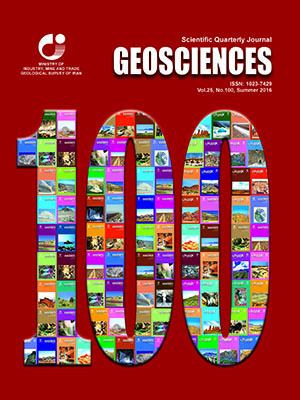Document Type : Original Research Paper
Authors
1 PhD Student of petrology, Department of Petrology and Economic Geology, Faculty of Earth Sciences, Shahrood University of Technology, Shahrood, Iran.
2 Associate Professor, Department of Petrology and Economic Geology, Faculty of Earth Sciences, Shahrood University of Technology, Shahrood, Iran.
3 M.Sc Student, Department of Petrology and Economic Geology, Faculty of Earth Sciences, Shahrood University of Technology, Shahrood, Iran
4 Professor, Department of Petrology and Economic Geology, Faculty of Earth Sciences, Shahrood University of Technology, Shahrood, Iran.
Abstract
In Ahmadabad Khartouran region located in 175 Km southeast of Shahrood, A significant number of adakitic domes crop out, which intruded into the Paleocene- Eocene volcanosedimentary rocks. Lithological compositions of these domes include andesite, trachyandesite, trachyandesite and dacite. Pyroxene (augite), green hornblende and plagioclase are typical mafic and felsic rock forming minerals. With respect to low HREE and high LREE along with other characteristic such as silica content (58.91- 63.41), Na2O more than 3%, Al2O3 more than16%, Yb less than 1.8 ppm, Y less than 18 ppm and K2O/Na2O ratio between .98- 2.3, these rocks can be classified as the high silica adakite. Enrichment of LREE relative to the HREE and depletion of Nb, Ti, and high concentration of Rb, Ba, K and Th, which imply crustal contamination of the mentioned adakitic domes. Enclaves with different size and composition have been seen in these domes which indicate contamination and magma mixing with continental crust. The evidence of petrographic and geochemical show that the magma forming of these rocks originated from melting of subducted metamorphosed Neotethys oceanic slab (Sabzevar – Darouneh branch) in P-T conditions of amphibolite facies.
Keywords

